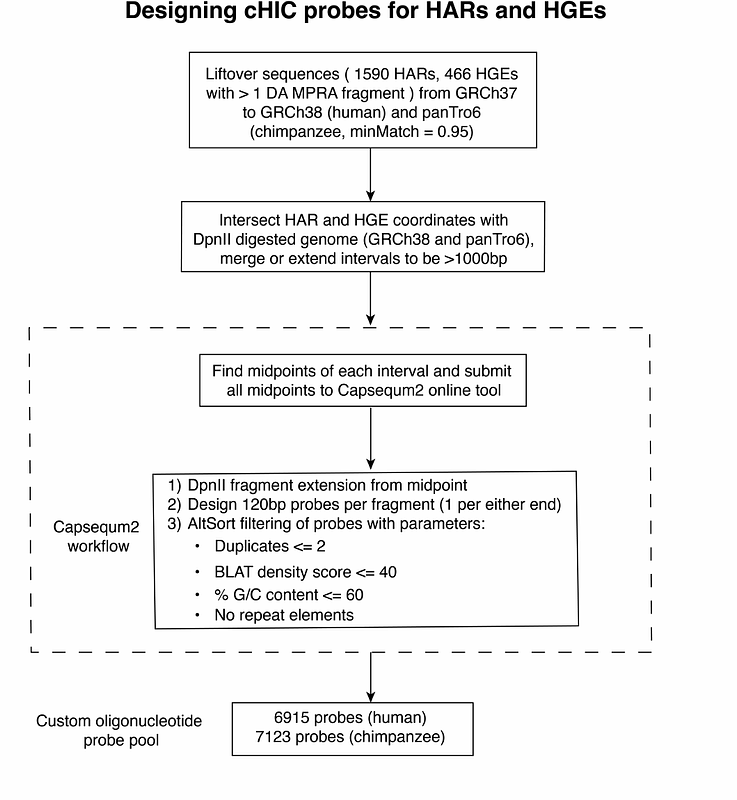Resolving the three-dimensional interactome of Human Accelerated Regions during human and chimpanzee neurodevelopment

Resolving the three-dimensional interactome of Human Accelerated Regions during human and chimpanzee neurodevelopment
Pal, A.; Noble, M. A.; Morales, M.; Pal, R.; Baumgartner, M.; Yang, J. W.; Yim, K. M.; Uebbing, S.; Noonan, J. P.
AbstractHuman Accelerated Regions (HARs) are highly conserved across species but exhibit a significant excess of human-specific sequence changes, suggesting they may have gained novel functions in human evolution. HARs include transcriptional enhancers with human-specific activity and have been implicated in the evolution of the human brain. However, our understanding of how HARs contributed to uniquely human features of the brain is hindered by a lack of insight into the genes and pathways that HARs regulate. It is unclear whether HARs acted by altering the expression of gene targets conserved between HARs and their chimpanzee orthologs or by gaining new gene tar-gets in human, a mechanism termed enhancer hijacking. We generated a high-resolution map of chromatin interactions for 1,590 HARs and their orthologs in human and chimpanzee neural stem cells (NSCs) to comprehensively identify gene targets in both species. HARs and their chimpanzee orthologs targeted a conserved set of 2,963 genes enriched for neurodevelopmental processes in-cluding neurogenesis and synaptic transmission. Changes in HAR enhancer activity were correlat-ed with changes in conserved gene target expression. Conserved targets were enriched among genes differentially expressed between human and chimpanzee NSCs or between human and non-human primate developing and adult brain. Species-specific HAR gene targets did not converge on known biological functions and were not significantly enriched among differentially expressed genes, suggesting that HARs did not alter gene expression via enhancer hijacking. HAR gene tar-gets, including differentially expressed targets, also showed cell type-specific expression patterns in the developing human brain, including outer radial glia, which are hypothesized to contribute to human cortical expansion. Our findings support that HARs influenced human brain evolution by altering the expression of conserved gene targets and provide the means to functionally link HARs with novel human brain features.


